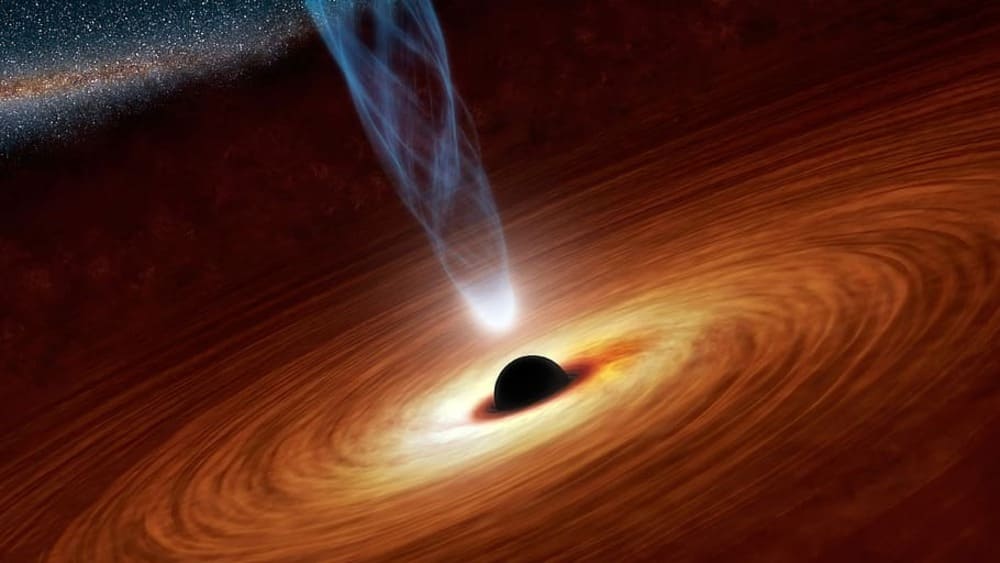Black holes are among the most intriguing and enigmatic phenomena in the universe. These cosmic entities challenge our understanding of physics, exhibiting properties and behaviors that seem to defy the very laws governing the cosmos. This essay delves into the nature, formation, and significance of black holes, exploring why they continue to captivate scientists and laypeople alike.
What is a black hole
This is a region in space where the gravitational pull is so intense that nothing, not even light, can escape from it. This immense gravitational force results from the collapse of a massive star’s core after it has exhausted its nuclear fuel. The boundary surrounding a black hole is known as the event horizon. Once an object crosses this boundary, it is inexorably drawn inward, beyond the point of no return.
Formation of black holes
They are form from the remnants of massive stars that have undergone a supernova explosion. When a star with a mass greater than approximately 20 times that of the Sun exhausts its nuclear fuel, its core collapses under the force of its own gravity. This collapse results in a singularity—a point of infinite density—surrounded by the event horizon. There are three main types:
- Stellar-mass: they are form from the collapse of individual stars and typically have masses ranging from about three to several tens of solar masses.
- Supermassive: found at the centers of galaxies, including our Milky Way, they are have masses ranging from hundreds of thousands to billions of solar masses. Their formation is still a topic of intense research, with theories suggesting they may grow from the merger of smaller black holes or through the accretion of vast amounts of gas and dust.
- Intermediate-mass: these are hypothesized to have masses between stellar-mass and supermassive black holes, though fewer examples of these have been observed. They might form from the merging of stellar-mass black holes or from the collapse of massive star clusters.
The physics
Black holes are unique laboratories for studying the laws of physics under extreme conditions. They embody concepts from both general relativity and quantum mechanics, two pillars of modern physics that are often difficult to reconcile. According to Einstein’s theory of general relativity, the presence of mass warps the fabric of space-time, creating gravity. In black holes, this warping is so extreme that it creates a singularity.
Quantum mechanics introduces additional complexities. The famous physicist Stephen Hawking proposed that black holes emit radiation—now known as Hawking radiation—due to quantum effects near the event horizon. This radiation suggests that they can slowly lose mass and potentially evaporate over incredibly long timescales.
Observing
Directly observing black holes is impossible because they emit no light. However, their presence can be inferred through their effects on surrounding matter and light. For instance, when a black hole accretes matter from a companion star or interstellar gas, this material forms an accretion disk around the black hole, heating up and emitting X-rays before crossing the event horizon.
The most groundbreaking observational evidence came in April 2019, when the Event Horizon Telescope (EHT) collaboration released the first image of a black hole’s event horizon. This image, capturing the supermassive black hole in the galaxy M87, provided visual confirmation of theoretical predictions and marked a milestone in astrophysics.
Black holes and the Universe
These cosmic entities play a crucial role in the evolution of galaxies and the universe. Supermassive black holes, for instance, are thought to influence star formation and the distribution of matter within galaxies through their intense gravitational and energetic interactions. Additionally, mergers of black holes, detected through gravitational waves by observatories like LIGO and Virgo, offer insights into the properties of space-time and the universe’s expansion.
Black holes represent the frontier of our understanding of the universe. They encapsulate the mysteries of gravity, quantum mechanics, and the nature of space and time. As our observational technologies and theoretical frameworks advance, they will undoubtedly continue to reveal new secrets about the cosmos, challenging our perceptions and expanding our knowledge. Their study not only enriches our comprehension of the universe but also pushes the boundaries of science itself.


